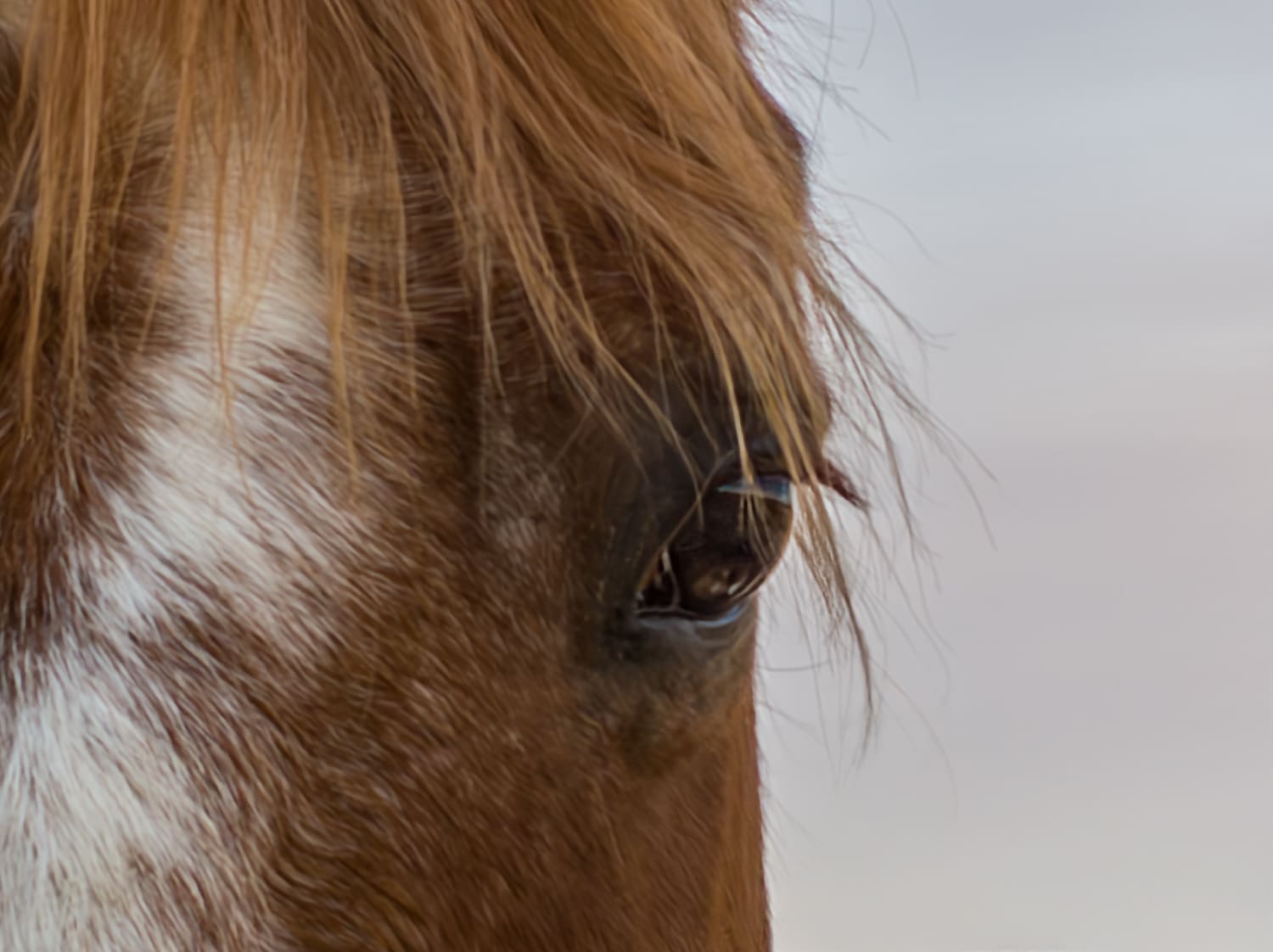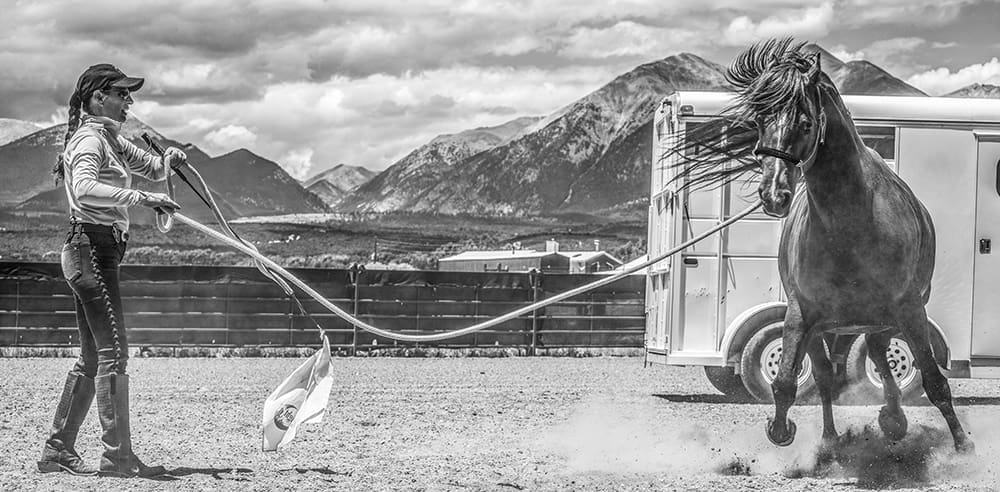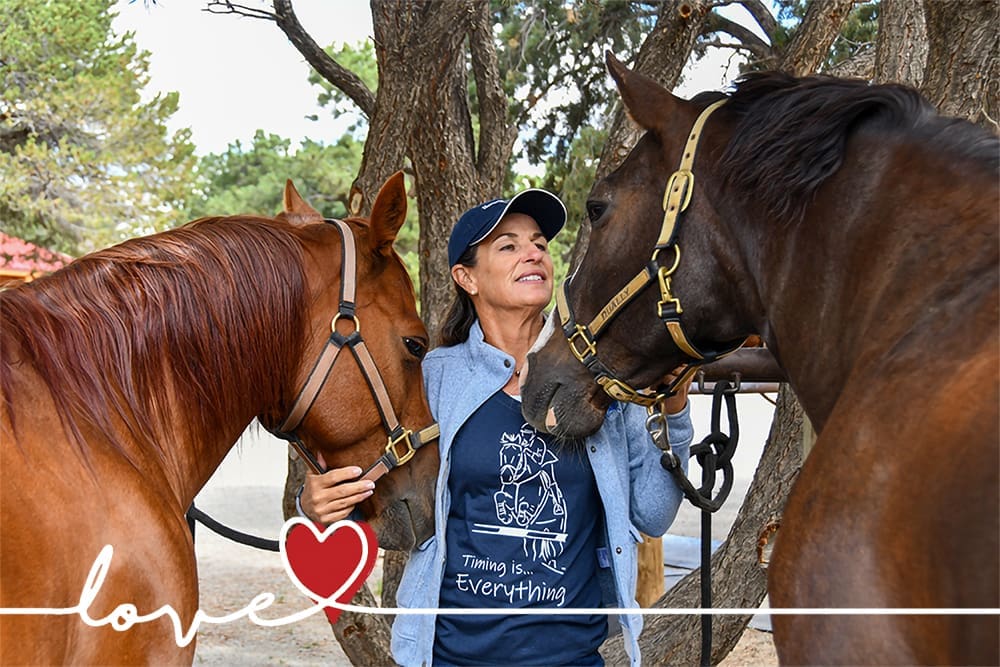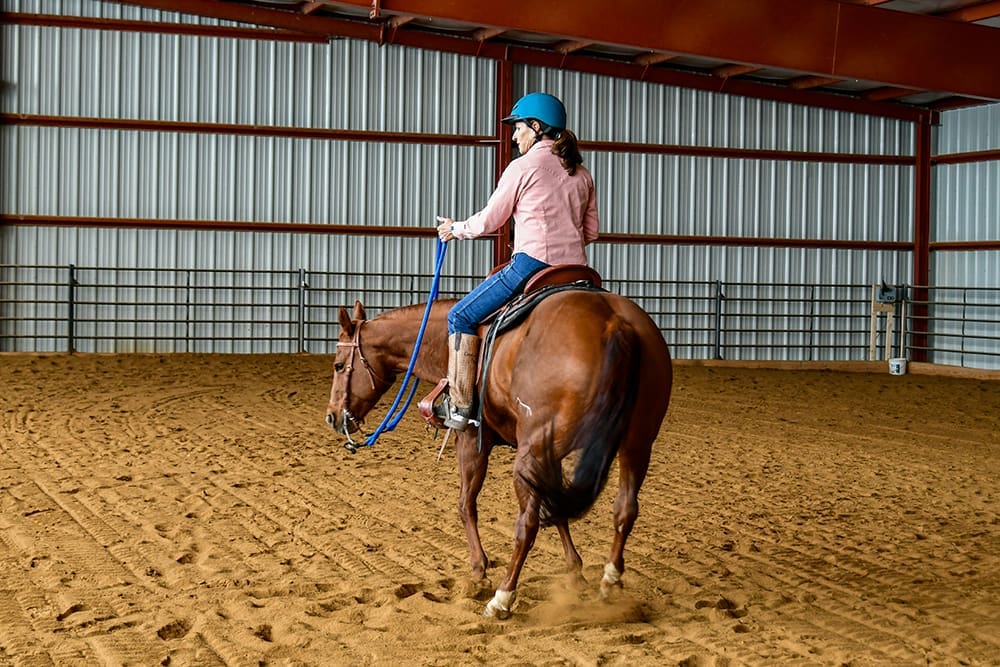Good Day!
Recently on Horse Master is an episode filmed in LA about a driving pony who was deathly afraid of anything plastic—bags, tarps and the like. Her owner, a very competent horsewoman who I have known from clinics, had been working for some time to desensitize the mare, but to no avail. Like many people, she had been using a technique known as “flooding” or “bombardment,” wherein you over-expose the horse to the aversive stimulus until she basically gets tired of spooking. Well, that would work for her eventually in each session, but she’d start over again from scratch the next day. Essentially, she was teaching the mare a pattern of behavior which is to spook first then eventually relax. Not really what we want, is it?
I much prefer to use a desensitizing technique known as “advance and retreat.” There are articles on my website about this but basically it means that you advance with the aversive stimulus only so far as causes the horse discomfort, then hold your ground until the horse relaxes, then take the stimulus away (retreat) and repeat. This technique teaches the horse to relax when there is something scary and when she relaxes, the scary thing goes away. Eventually the horse loses all fear because she feels a sense of control.
Even though this little mare had the spooky response well-engrained into her, she responded very well when we switched techniques. She’s a smart little horse and was only acting spooky because she thought that was the expected response. Once she realized the expected response was to relax and be still, that is what she did.
This makes me think about something I say all the time in clinics—if things are not getting better, what you are doing isn’t working and you need to break the cycle somehow. If you are using a training technique again and again and it is not effecting a positive change in your horse—it ain’t working. Time to try something different. Now I am not saying you need to switch techniques every day, but there comes a point when you are not getting through to your horse and you need to make a change. Otherwise, you end up training the wrong thing to your horse.
Have you ever had a situation like this with your horse? Maybe you are trying to correct a bad behavior, like, let’s say, biting. And you correct your horse again and again for his bad behavior but he keeps nipping at you. Clearly what you are doing is not working and in this case, it is because you are not applying enough pressure to the horse to motivate him to change. If the pressure or penalty is not harsh enough, he’s happy to keep doing what he’s been doing. Depending on how motivated your horse is to act that way to begin with and depending on how sensitive he is to pressure, these things will dictate how much pressure you have to use. But don’t keep doing the same thing with no response.
All the best,
Julie



